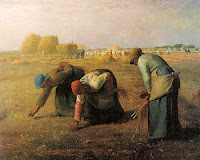Esref Armagan is an artist from Istanbul who paints pictures of sailing
boats and lakes; quaint, red-roofed houses; windmills dotted on the
hillside and multi-coloured fish swimming in the deep blue sea.
Armigan's paintings are charming but not remarkable
enough to warrant all the fuss that’s been made of them, unless you are aware of the fact that
this particular artist has been blind since birth. Then you may wonder at the way he is able to
incorporate into his paintings so many elements that cannot be felt. His clouds, for example are fluffy and vapourous but how can a blind man feel his way around a cloud? An apple, yes - but a cloud? He gives everything its correct colour has a reasonable grasp of
three-dimensional space and he can deal with perspective; his roads narrow into
the distance, his houses diminish in size.
His pictures are as credible as those of many sighted people and in
fact, a great deal more competent than most.
When asked how he does it, he says that he was taught, not formally, but
by casual acquaintances who told him what the world looked like.
Obviously, the mechanics of actually getting the paint onto the paper
and in the right place, is for him, a laborious matter and he’s had to memorise
the location of all the colours in his paintbox.
But what intrigues me, is not how good he is, but how bad most of the
rest of us are, if we can only produce art that is as good as a blind
man’s. Does this not illustrate that
when it comes to picturing the world, we’re most of us hardly using our sight
at all?
Our brains are swamped with so much information
at every second of the day that we only take from a given situation those
elements that are absolutely essential to the moment.
The rest we discard.
And this is how we negotiate our way through the hazards and the humdrum of life; with
incomplete information and assumptions about things rather than truths.
So while we’re swarming across the globe at ever-increasing speeds,
pausing only to squeeze the button on our digital cameras, the artist must stop and taking his time, allow the world to slowly manifest itself
around him. He or she will look at all the
information that the rest of us have discarded and give it their full attention.
Because the artist knows that if you want to be able to paint the world you
have to learn how to see it. And in order to truly see it, you first have to
overcome your own blindness.



























